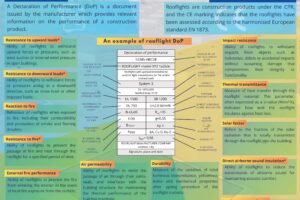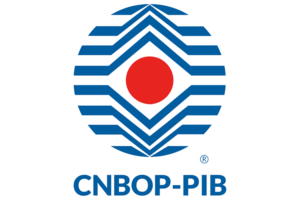The Energy Performance of Buildings Directive 2024/1275 (EPBD) highlights the role of transparent building elements in the building envelope—such as rooflights, roof hatches, and NSHEVs in the roof.
To help designers and building specifiers the Eurolux Guideline 01 provides a detailed methodology for determining the thermal transmittance of rooflights (commonly known as the U-value) in accordance with the harmonised European Standards EN 1873 and EN 14963.
What Is U-value?
The U-value measures the amount of heat energy transferred through a square metre of a building component per degree of temperature difference between the interior and exterior environments.
It is expressed in watts per square metre per Kelvin (W/m²·K). Lower U-values indicate superior insulating performance, as they represent reduced heat loss.
Significance of U-Value for Rooflights
Rooflights are designed to introduce daylight and provide natural ventilation into buildings.
Evaluating the U-value of rooflights is essential to ensure they contribute positively to the building’s thermal performance. An optimal U-value helps maintain indoor temperature stability, reduces reliance on heating and cooling, and improves the overall energy efficiency of the building.
Calculating the U-Value of Rooflights
The calculation of the U-value is straightforward for flat products.
However, most rooflights, roof hatches, and NSHEVs are out-of-plane, as they are mounted on upstands. Consequently, their thermal performance must be calculated using:
- The surface area of the rooflight-and-upstand assembly.
- The area of the roof opening
- The minimum daylight area
- The surface area of the glazing
When evaluating the thermal contribution of rooflights and roof hatches, two values should be checked against limiting values in relevant national regulations:
- Ur-value – for the rooflight only
- Urc-value – where the rooflight is supplied with an upstand.

Example of a rooflight with edge profile

Example of a rooflight with edge profile and upstand
Credit: Eurolux Guideline 01
Looking to the future
Rooflights and roof hatches enable not only the introduction of daylight into the building design, but also natural ventilation, which is key to the control of moisture and condensation and to an increased thermal comfort of the occupants.
In addition to fulfilling the requirements of the harmonised European standards EN 1873 and EN 14963, both manufacturers and building designers integrating rooflights and roof hatches in their building designs shall ensure that the products installed fulfil the minimum national requirements on thermal transmittance for the type of buildings in which they are being installed.
National regulations setting maximum U-values for rooflights, roof hatches and/or NSHEVs
- Germany: GEG
- UK: Approved Document L
Reference documents freely accessible in our blog
- Eurolux Guideline 01 provides a detailed methodology for determining the thermal transmittance of rooflights (commonly known as the U-value) in accordance with the harmonised European Standards EN 1873 and EN 14963.




